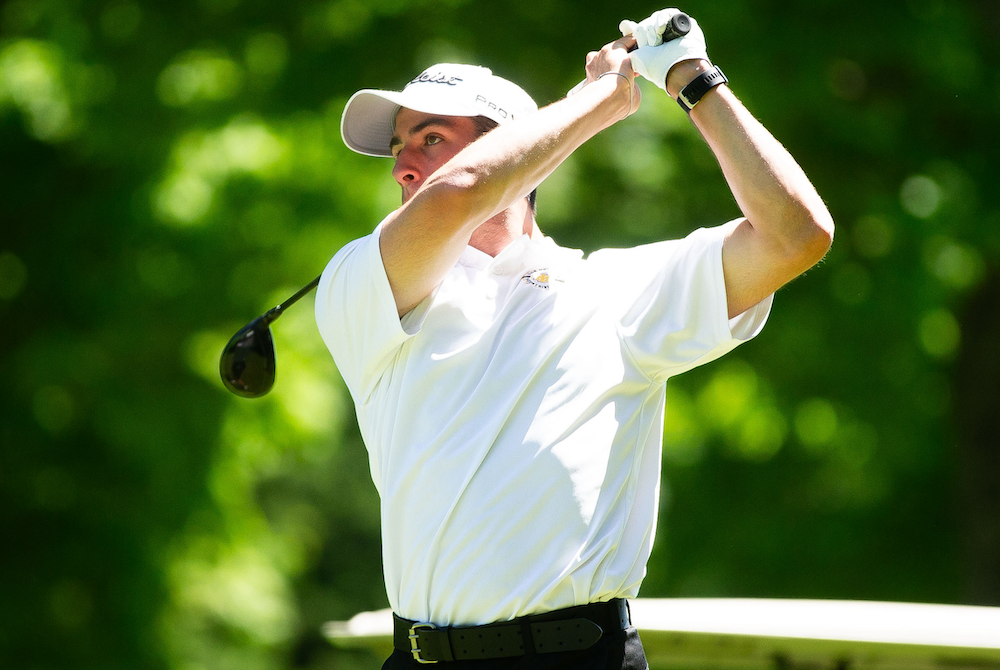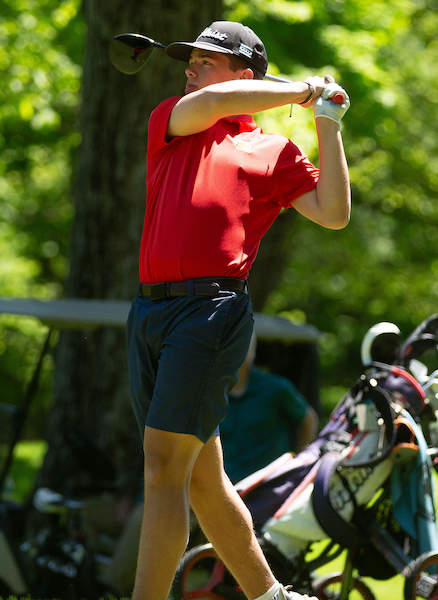
Keep on Coaching
February 1, 2013
By Geoff Kimmerly
Second Half editor
A few weeks ago, I finally got my first chance this season to watch a friend coach his basketball team. After guiding some others at the lower levels, this is his first time running the varsity – something he wasn't sure he wanted to do with a 1-year-old just learning to walk, but a challenge he ended up taking on to the benefit of all those involved.
Simply put, he’s good. I've seen a lot of teams and a lot of coaches over the past 15 years, and although I wouldn't know much of what to do if I were walking the sideline, I felt pretty qualified in telling him I was impressed – even if he didn't buy that I was offering an unbiased opinion. The best news is he’s gone from not sure about this a few months ago to talking about next season.
We know, at least anecdotally, that coaching continues to get more challenging. The time commitment has grown substantially to make running a program a year-round endeavor in a lot of sports at a lot of schools.
That commitment – especially for coaches with children of their own – was a main reason referred to in a New Haven Post-Chronicle story Saturday that noted 23 football coaching openings in Connecticut at one point this offseason. That state has 146 football teams – meaning roughly 15 percent will have new leaders this fall.
And that got me thinking about my friend, about how glad I am he’s given this a shot, and how I've seen so many others either not do so, or not stick around long despite having some pretty nice success.
A study published last winter in Interscholastic Athletic Administration magazine – a product of the National Interscholastic Athletic Administrators Association – noted some predictable results of a study that sought to determine the biggest challenges faced by first-year high school coaches.
The toughest according to the study was balancing the demands of coaching and teaching, experienced by nearly half the respondents – 98 percent of which coached high school teams and 81 percent of which are teachers.
The next six reasons all were noted by at least 30 percent of those in the study – personal fatigue, securing community support, securing and caring for facilities and equipment, parental contact, keeping non-starting players motivated, dealing with schedule interruptions and motivating athletes to achieve consistent, peak performance.
Nothing there is earth-shaking, and most if not all of these challenges are faced by high school coaches regardless of how long they've been in the field. But I got a little more perspective from some of the 32 items that ranked as least challenging to the first-year leaders – keeping in compliance with state and league regulations, dealing with substance abuse issues, teaching sport skills and creating a positive team atmosphere – things that seem most important, and yet appear to be easiest to do. I’m not sure what that tells us – but I think it tells us something.
Click to check out the entire three-page breakdown of the study, plus the researchers’ recommendations to remedy some of what first-year coaches face.
Giving back to Saginaw
I love reading about high-level athletes – like a star-studded group of alums from Saginaw – giving back to where they got their starts.
Pittsburgh Steelers star LaMarr Woodley made a big impact before the start of this school year by donating $60,000 to cover all participation fees for athletes in his former school district. The Saginaw News’ Hugh Bernreuter writes today about how Woodley (Saginaw High), the Philadelphia 76ers’ Jason Richardson (Saginaw Arthur Hill) and former Oakland Raiders standout Stu Schweigert (Saginaw Heritage) have combined to give more than $865,000 back to their home communities.
Bernreuter also mentions the non-monetary contributions of the Golden State Warriors’ Draymond Green (Saginaw High) and former Indianapolis Colts receiver Blair White (Saginaw Nouvel).
Click to read more about it.
Quote(s) of the Week
While rifling through more papers on my desk, I found an article from the Washington Post from Sept. 2011 titled “How high school sports save our schools.” I was drawn to it in part because I spent more than a decade in a newsroom, and it was a piece by a reporter covering education who instead of reporting on school boards and the like, delved into the importance of interscholastic athletics to education as a whole.
He spoke of how participation continues to grow even as resources dwindle, and of data supporting that extracurriculars like sports are more effective than academic classes in teaching leadership, teamwork, time management and “other skills crucial for success in the workplace.” Later, he mentioned a study noting that those who participate in extracurriculars earned more a decade later.
Click here to read the entre piece. These passages struck me most.
“Coaches might be the only faculty members still allowed by our culture and educational practice to get tough with students not making the proper effort. They have the advantage of teaching what are essentially elective non-credit courses. They can insist on standards of behavior that classroom teachers often cannot enforce because the stakes of dismissing or letting students drop their courses are too high. …
“Students do better in activities they choose. If we provide more of them, led by committed adults … that can make a difference. We know the bad news about education. Dropout rates are high. Achievement scores are stagnant. But sports participation is going up, despite pressure to cut it back. Let’s cheer about that and look for a way to draw in more students.”

Iron Mountain's Pigeon Holds On to Finish 1st, Hancock Claims Team Title
By
Jason Juno
Special for MHSAA.com
May 29, 2024
CRYSTAL FALLS – Iron Mountain junior Cooper Pigeon started Wednesday’s Upper Peninsula Division 2 Final with a birdie.
He made sure the rough patch that followed was short lived – and it’s a good thing he did, because Hancock’s Jackson Sintkowski made sure there wasn’t much margin for error.
Pigeon carded a 76, a single stroke ahead of Sintkowski, to win the medalist honor at Young’s Golf Course.
“He has the mindset that he doesn’t let that bother him,” Iron Mountain coach Steve Flaminio said. “He turned it around and got a couple birdies and righted the ship. He figured it out like he always does and started playing pretty strong.”
It wasn’t an easy course, nor was it a perfect day to golf. The sun was out, but it was windy, which could exaggerate any minor errors, Pigeon said.
Some of the pin placements were tough, Flaminio said, and the greens were super fast – Flaminio watched kids three and four putt many times throughout the day.
“There were some young guys out there struggling. Cooper figured it out, and that was key,” he said.
The Finals title was Pigeon’s first. He knew he had a chance to win after shooting a 73 in his last round at this course.
 “But you have to play well, and you can’t get ahead of yourself,” he said.
“But you have to play well, and you can’t get ahead of yourself,” he said.
The bulk of the U.P. summer awaits him and he plays golf almost daily, so he could certainly be a force to be reckoned with next season as well.
“It’s sweet; hopefully we can get another one next year,” Pigeon said.
Flaminio said the rest of the team was excited for their individual champ because they can see how hard he works at his craft.
“So to see him come home as medalist in the U.P. is pretty awesome,” he said.
Sintkowski, the runner-up from Hancock, did leave with some hardware himself as he led the Bulldogs to their first U.P. Finals team title since they won Division 2 back-to-back in 2013 and 2014.
He was one of four Bulldogs to finish among the top 10 individuals – Bryce Hanner placed fifth with an 83, Kirby Storm was sixth with an 86 and Drew Sturos tied for 10th with an 88.
Hancock competes in the Western Peninsula Athletic Conference, where it finished runner-up to Division I Houghton throughout much of the season. That doesn’t mean the Bulldogs have been golfing poorly.
“The kids have been playing well all year,” Hancock coach Paul Sintkowski said.
The Bulldogs came into this tournament with the lowest team average, so they considered themselves the favorites and lived up to that high expectation.
“We had the guys to get it done today, but you still got to get it done,” said Sintkowski, who earned his first U.P. team title in nine years of coaching. “They got it done today. I’m real proud of these guys.”
Hancock was led by the West-PAC Player of the Year, Jackson Sintkowski, a junior. And their team got a big boost this season when Hanner decided to join the golf team.
“Bryce Hanner was a nice addition to our team this year,” Coach Sintkowski said of the senior. “He decided to play golf this year, and that really bolstered our lineup down the stretch. It gave an extra solid player where we could always count on a good score for him.”
Painesdale Jeffers finished as the team runner-up, 15 strokes behind Hancock, 333-348. St. Ignace was third, Iron Mountain fourth and Munising fifth.
Owen Kuehnau of Stephenson carded an 81 to take third place individually, and St. Ignace’s Sawyer Graham was fourth with an 82.
PHOTOS (Top) Iron Mountain's Cooper Pigeon drives on No. 14 at Young’s Golf Course on Wednesday. (Middle) Hancock’s Jackson Sintkowski follows his drive on the same hole. (Photos by Jason Juno.)

